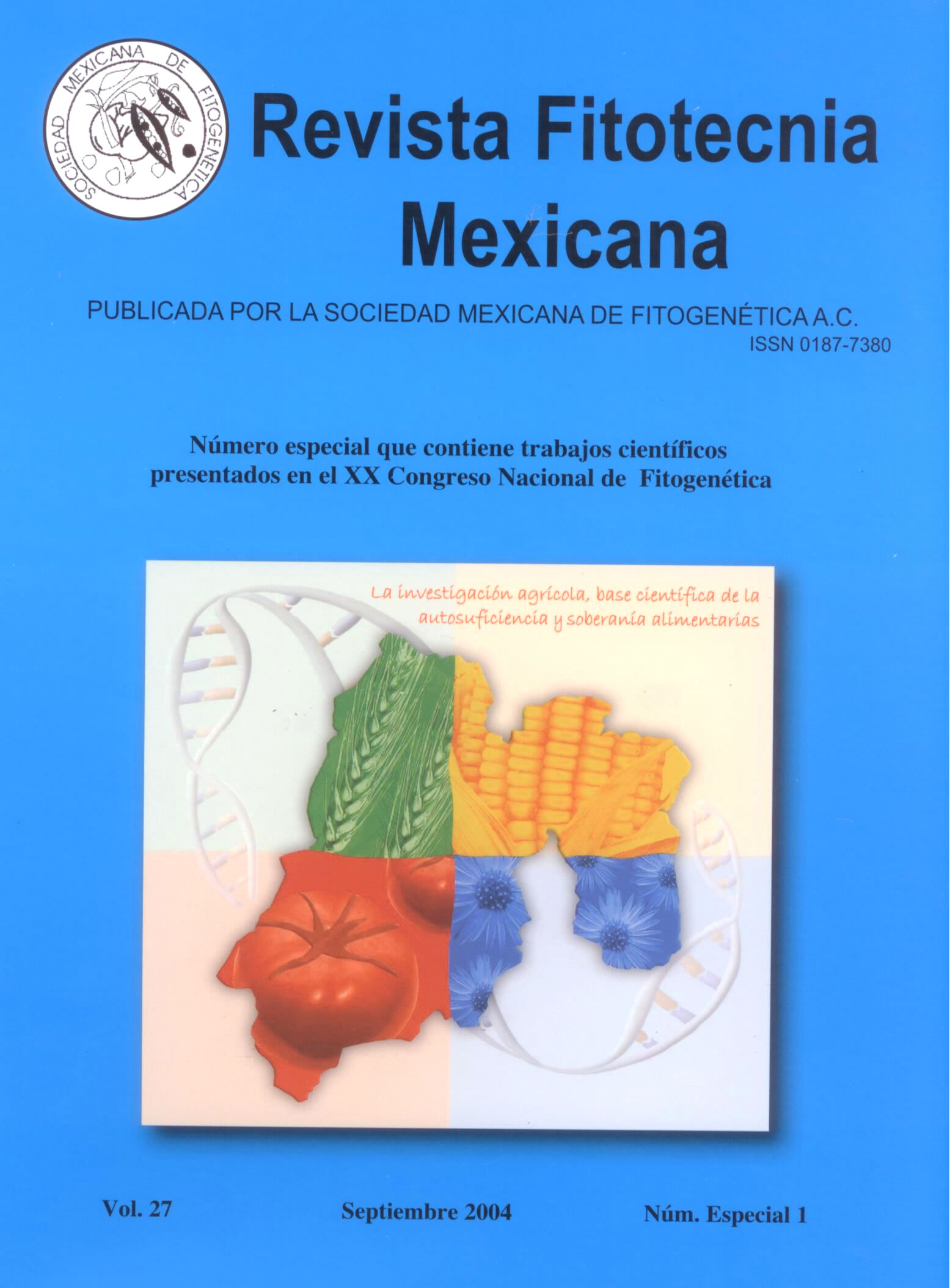COMBINING ABILITY OF MAIZE LINES FOR HIGH FORAGE AND QUALITY PRODUCTION
Main Article Content
Abstract
In the North Central part of México, the area of maize (Zea mays L.) forage production has increased significantly; however, forage hybrids with good nutritive quality have not been developed. The objective of the present work was to identify experimental corn hybrids with high forage and quality production at two locations contrasting
in altitude and weather conditions. In 2003 in Pabellón, Ags., and Torreon, Coah., Mex., 9 S2 lines crossed with the tester BTVC x BTRL adapted to highlands and 15 lines crossed with the subtropical tester CML7 8x CML322, plus a control were evaluated under irrigation. The material was evaluated in a complete randomized block design with two replications. Fertilizer and population density were 200N-90P-00K and 80 000 plants per hectare. Dry matter production (DMP), crude protein (CP), neutral and acid detergent fiber (NDF and ADF) and in vitro digestibility (IVD) were measured. Using data of DMP, CP, NDF and DIV, the milk production per hectare (MPHA) was estimated. There were no differences between testers in none of the production and quality traits measured; however they allowed a high genetic expression of the crosses in all traits across locations. In most crosses DMP was higher than 20 t ha-1 in both locations, and one of them produced more than 27 t ha-1. The best four crosses for MPHA yielded from 15 to 18 t ha-1 in Pabellón and from 17 to 22 t ha-1 in Torreón. These crosses had also the highest nutritional quality with low contents of NDF and ADF and high DIV across locations, and significantly outyielded the control in Torreón.

